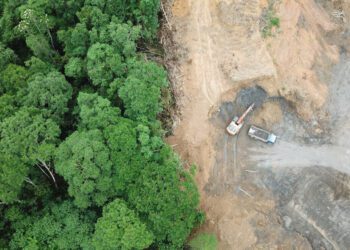Every enterprise is finding that its space for business as usual is increasingly constrained by the planet’s environmental limits, by broader social and economic needs, and by rising stakeholder demands. Consequently, in addition to addressing all the traditional factors defining competition, company strategies now need to explicitly confront the dynamic socio-environmental externalities of the business. From their impacts on climate to the communities where they operate, the growing challenge for business leaders is to navigate through wider sustainability constraints while still delivering the financial results on which its employees and shareholders depend. But new opportunity can be found in creating innovative business models that integrate growth and value creation with the generation of broader environmental and societal benefits. And we’ve seen that some leading companies are fundamentally reimagining their businesses to turn sustainability into core business advantage.
Take the example of Schneider Electric, a digital energy management firm based in Rueil-Malmaison, France. Driven by a vision to be a leader in sustainability, the company has reimagined its business model over time, evolving from initially being a French-based, traditional electric installations player to becoming a truly global leader in digital sustainability solutions. Today, much of this company’s business model relies on the EcoStruxure platform. Introduced in 2007 and enabled with sophisticated digital tools, analytics, and the Internet of Things, EcoStruxure manages the data and controls for buildings, infrastructure, data centers, power grids, and industries. By shaping the way its customers manage their energy consumption and sustainability footprint across almost half a million sites, EcoStruxure has helped them collectively save 90 million metric tons of CO2 per year (equivalent to taking almost 20 million cars off the road for an entire year).
Schneider Electric also actively works on improving environmental and societal impact in other ways. For instance, it has worked on a ground-breaking collaboration with Walmart to provide increased access to renewable energy across the retailer’s US-based supply chain. The initiative, called the Gigaton Power Purchase Agreement (GPPA) Program, is designed to educate Walmart suppliers about renewable energy purchases and facilitate adoption through aggregate purchase agreements.
The company also worked with countries around the world to develop fast-track health care facilities throughout the COVID-19 pandemic. In China and Turkey, Schneider helped get new hospitals operational. In the UK and Italy, it helped convert exhibition centers into temporary hospitals. In France, India, and Spain, it helped manufacture respirators, and on a global scale, it worked on rapid deployment of solutions to enable intensive care units to better manage the challenges of the pandemic.
These efforts are emblematic of Schneider Electric’s reimagination of its business model, from being a traditional B2B electrical distribution equipment manufacturer to becoming a recognized global leader in environmental sustainability solutions. Its annual revenues have grown accordingly, from €15 billion ($18 billion) in 2007 to €27 billion ($33 billion) in 2019. In January 2021, the prominent Canadian “clean capitalism” magazine Corporate Knights named Schneider Electric the most sustainable corporation in the world.
Companies face increasing constraints on conducting business as usual. Stakeholder expectations from all sides are demanding accountability to address negative impacts and increasingly demanding that companies go beyond mitigation and demonstrate positive environmental and societal benefits.
And in recent years, businesses have invested in significant initiatives to demonstrate their commitment to creating environmental and societal benefits—or at the very least, mitigating their harmful practices. Many companies have developed sustainability initiatives that aim to reduce greenhouse gas emissions, improve general quality of life, reduce vulnerability to diseases, or lift people out of poverty. But too often these efforts remain fragmented, lacking scale and impact. And too often they are disconnected from underlying drivers of business value. In interviews, executives say their greatest challenge with these initiatives is integrating them into their core business. These initiatives have limited ability to release the tightening constraints on a company’s opportunity space. To break through, companies must make sustainability a source of business advantage, and that requires taking a new approach that seeks out innovative ways to address environmental and societal needs through their core business models.
Sustainable business model innovation (SBM-I) brings these two ideas together, addressing the main challenge executives face in making sustainability a source of advantage. Exhibit 1 depicts competitive advantage and business value on the left, environmental and societal benefits on the right, and in the center, the place to focus attention: continued development and improvement of a sustainable business model. Companies like Schneider Electric solve for their business objectives and their environmental and societal commitments together, widening their opportunity space in the process.
By David Young, Martin Reeves, and Marine Gerard
This article originally appeared at https://www.bcg.com/en-mx/publications/2021/keys-to-being-a-leader-in-sustainable-business-model-innovation and is republished with permission.











